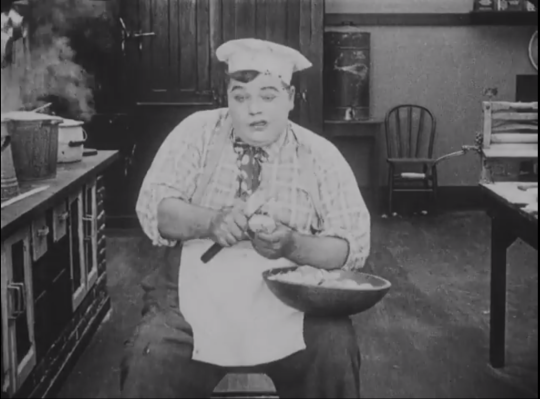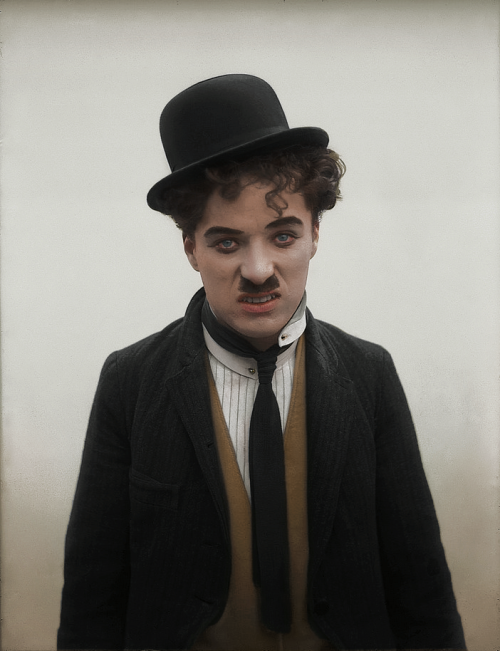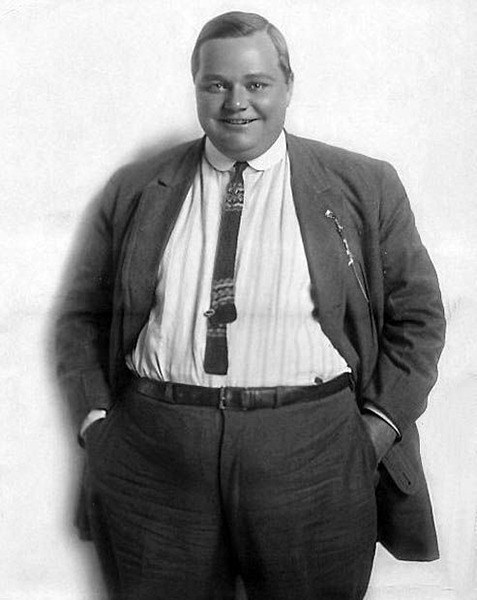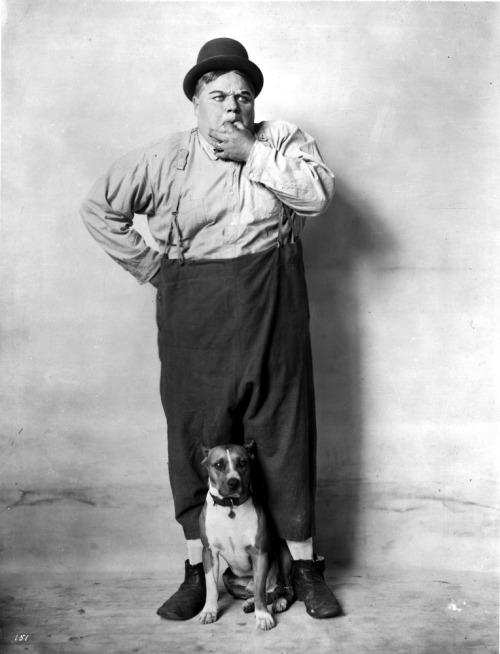#fatty arbuckle
Although the famous Virginia Rappe-Arbuckle scandal belongs to the 1920s, they were mostly active during the 1910s. The story is well known by all of us.
Post link
Some of the biggest stars of the 1910s and of all times:
Mary Pickford, Queen of the Movies; Theda Bara the Vamp Supreme; Douglas Fairbanks Sr., the all american hero; Charles Chaplin, the tramp, and the incredible clowns Mabel NormandandFatty Arbuckle.
Post link
THE WONDER EMPORIUM DAWN-OF-CINEMA REVUE
Roscoe “Fatty” Arbuckle and Buster Keaton in The Butcher Boy(1917)
After four years of throwing pies and falling on his backside at Mack Sennett’s Keystone Films, The Butcher Boy marked Roscoe “Fatty” Arbuckle’s first movie for Comique - his own company, in partnership with producer Joseph M. Schenck. More importantly, it marked the screen debut of Buster Keaton, who eventually took over Arbuckle’s studio when he moved on to features at Paramount. Keaton would credit Arbuckle as his filmmaking mentor, and became Arbuckle’s most outspoken supporter in the film community following the murder scandal of Labor Day 1921.
In his 1960 autobiography My Wonderful World of Slapstick, Keaton recalled production of The Butcher Boy…
Roscoe - none of us who knew him personally ever called him Fatty - took the camera apart for me so I would understand how it worked and what it could do. He showed me how film was developed, cut, and then spliced together. But the greatest thing to me about picturemaking was the way it automatically did away with the physical limitations of the theatre. On the stage, even one as immense as the New York Hippodrome stage, one could show only so much.
The camera had no such limitations. The whole world was its stage. If you wanted cities, deserts, the Atlantic Ocean, Persia, or the Rocky Mountains for your scenery and background, you merely took your camera to them.
He went on to recall Arbuckle fondly…
The longer I worked with Roscoe the more I liked him. I respected without reservation his work both as an actor and a comedy director. He took falls no other man of his weight ever attempted, had a wonderful mind for action gags, which he could devise on the spot. Roscoe loved all the world, and the whole world loved him in those days. His popularity as a performer was increasing so rapidly that soon he ranked second only to Charlie Chaplin.
Arbuckle was that rarity, a truly jolly fat man. He had no meanness, malice, or jealousy in him. Everything seemed to amuse and delight him. He was free with his advice and too free in spending and lending money.
I could not have found a better-natured man to teach me the movie business, or a more knowledgeable one. We never had an argument. I can only remember one thing he ever said that I disagreed with.
“You must never forget,” he told me that day, “that the average mentality of our movie audience is twelve years.”
I thought that over for a long time, for three whole months in fact. Then I said to Roscoe, “I think you’d better forget this idea that the movie audience has a twelve-year-old mind. Anyone who believes that won’t be in pictures for very long, in my opinion.”
I pointed out how rapidly pictures were improving technically. The studios were also offering better stories all of the time, using superior equipment, getting more intelligent directors. Griffith’s Birth of a Nation was fascinating people who had never before thought of the movies as anything but an interesting toy. They’d shown Griffith’s masterpiece at a two dollar top, which was as much as was charged then for some Broadway plays. “Every time anyone makes another good picture,” I said, “people with adult minds will come to see it.”
On thinking it over, Arbuckle said I was right. But the low estimate of the audience’s mind, I notice, survives to this day in Hollywood. I sometimes wonder if TV, free or not, could have overtaken and overwhelmed the movie industry so quickly if its studio bosses had rejected that myth.

Ah, the sound of centennial laughter. Once believed lost, Roscoe Arbuckle’s 1918 comic two-reeler The Cook (subject of my newest Grand Old Movies post) was rediscovered–twice (in two different locations, at two different times)–and was restored in the 21st century. It now exists to delight us 100 years later. Like many early silent comedies, it’s a ramshackle film, with Arbuckle and co-stars Buster Keaton, Al St. John, Alice Lake, and Luke (surely the funniest canine in film comedy) going wherever comic inspiration takes them. Among its loose plot strands are the doings at a swanky restaurant, a bout of spaghetti-eating, a trip to Coney Island, and a chase of man by dog. But the climax is surely its epic Egyptomanic dance, which sends up every Cleopatra-Salomé cliché you can think of. As performed by Arbuckle himself, it’s not only screamingly funny but a marvel of grace, delicacy, and sensuousness. 100 years strong, The Cook is one we don’t want to lose again. Click here to read my post. And keep checking those attics and garages; who knows who other lost cinema treasures may still be around?









